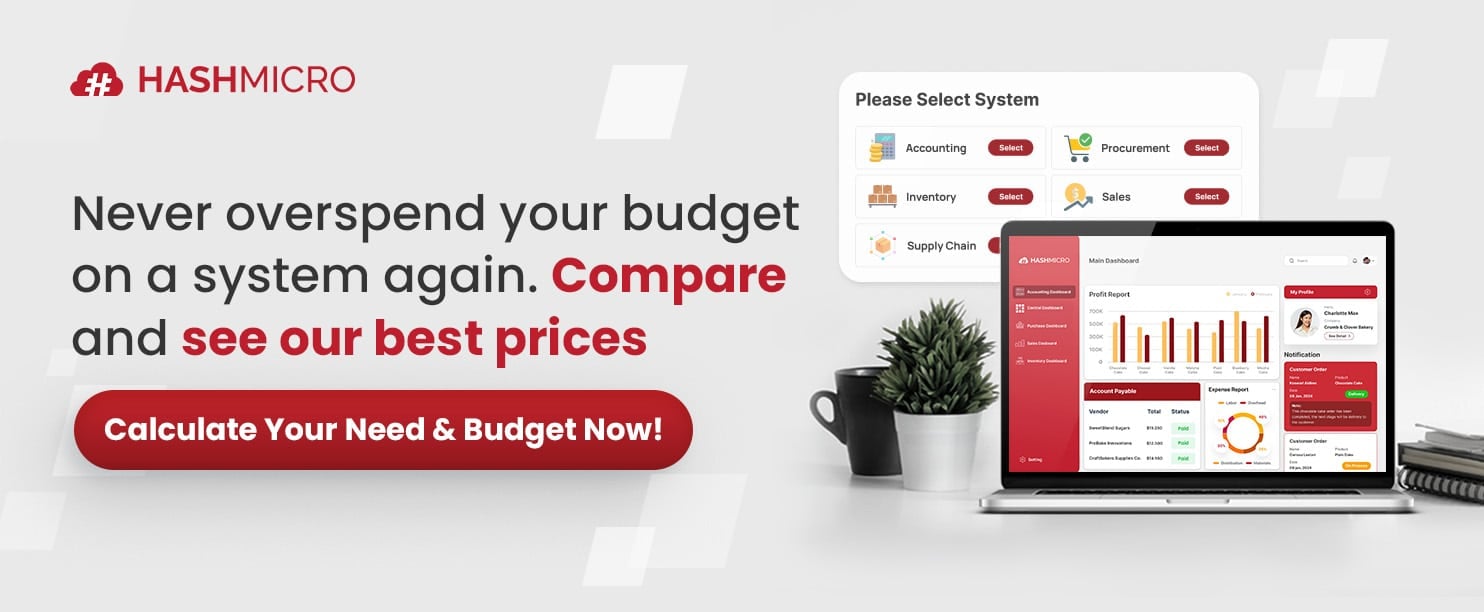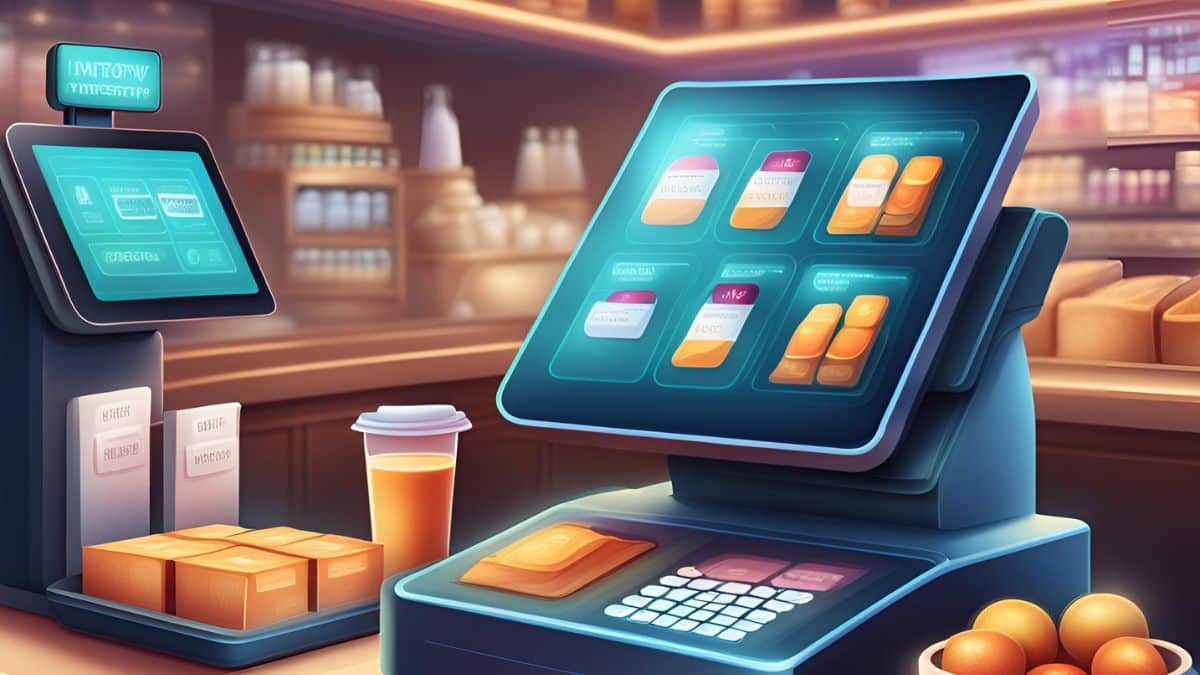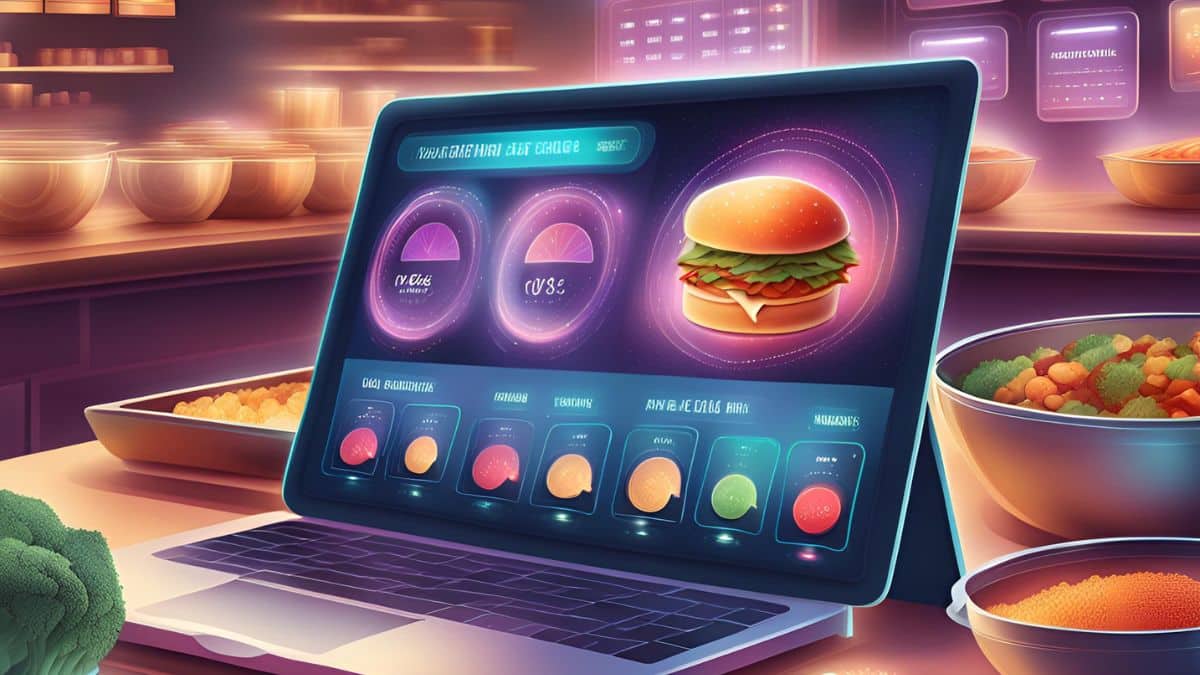Imagine the frustration of over-ordering perishables, leading to unnecessary waste and profit loss, or running out of a signature dish during peak hours, disappointing loyal customers. These common inventory mishaps highlight the urgent need for restaurant inventory management to maintain profitability and customer satisfaction.
With Malaysia’s foodservice industry projected to grow from USD 14.75 billion in 2025 to USD 27.5 billion by 2030, competition is becoming more intense. To stay ahead, restaurants must implement efficient inventory strategies to reduce waste, optimize stock levels, and enhance operational control.
To address these challenges, HashMicro’s Inventory Management System offers real-time stock tracking, automated procurement, and barcode monitoring. This powerful solution ensures restaurants maintain accurate stock levels, prevent losses, and streamline daily operations.
In this guide, we will explore restaurant inventory management best practices and the role of advanced software solutions in improving efficiency. Discover how smart inventory management can boost your restaurant’s profitability and long-term success!
Table of Content
Content Lists

Key Takeaways
|
What is Restaurant Inventory Management?
Restaurant inventory management is the foundation of efficient operations. It ensures that a restaurant maintains the right stock levels to meet demand without unnecessary surplus. By implementing inventory management software, businesses can streamline tracking, minimize waste, and prevent costly stock shortages.
A well-structured kitchen inventory management system enables restaurants to monitor ingredient usage, optimize purchases, and reduce operational costs. With tools like POS-integrated tracking, restaurants can optimize restaurant stock by accurately forecasting demand and replenishing supplies at the right time.
To maintain accuracy, regular stock audits and restaurant inventory management best practices like setting “par levels” help prevent shortages and excess inventory. Inventory management in the restaurant industry ensures seamless operations, improves financial control, and enhances overall profitability.
Why Restaurant Inventory Management Matters?

In the restaurant industry, where profit margins are tight and competition is fierce, effective restaurant inventory management plays a crucial role in ensuring long-term success. Proper inventory control helps businesses optimize stock levels, minimize waste, and maintain smooth kitchen operations.
Below are the key reasons restaurant inventory management best practices are essential for business sustainability:
- Maximizes profitability and reduces waste: Effective inventory management ensures that restaurants maintain optimal stock levels, preventing over-purchasing and spoilage. By tracking inventory efficiently, businesses can minimize waste, lower operational costs, and increase profitability.
- Enhances cash flow and resource allocation: A structured inventory system prevents capital from being tied up in excess stock, allowing for better financial management. Utilizing restaurant inventory management software helps restaurants allocate resources efficiently and make data-driven purchasing decisions.
- Prevents stockouts and improves customer satisfaction: Maintaining the right stock levels ensures that essential ingredients are always available, preventing menu disruptions and substitutions. Stock level optimization is crucial in delivering consistent service and retaining customer loyalty.
- Improves decision-making with data insights: A well-organized kitchen inventory management system provides valuable insights into best-selling dishes and seasonal demand trends. This data enables restaurants to optimize their menu offerings and improve business strategies.
- Strengthens business sustainability: Implementing restaurant inventory management best practices, such as regular audits and setting par levels, enhances long-term operational efficiency. A strong inventory management in the restaurant industry helps restaurants stay competitive and adapt to changing market conditions.
The Benefits of Restaurant Inventory Management

Effective restaurant inventory management is essential for maintaining profitability, reducing waste, and ensuring smooth operations. By utilizing the right systems and strategies, restaurants can optimize stock levels, prevent financial losses, and improve efficiency.
Below are the key benefits of implementing structured inventory management in the restaurant industry:
1. Prevents food loss and theft
A well-structured restaurant inventory management system helps track every ingredient and supply, reducing the chances of loss due to mismanagement, theft, or human error. By monitoring stock movement in real-time, restaurant owners can identify discrepancies and take proactive measures to prevent unnecessary losses.
Proper inventory tracking also ensures that food costs remain controlled by improving the stock level optimization process. Additionally, restaurant inventory management software helps businesses detect unusual consumption patterns and implement security measures to minimize shrinkage.
2. Reduces food waste and spoilage
One of the biggest challenges in restaurant inventory management is preventing food waste due to spoilage, over-ordering, or inefficient storage practices. Implementing kitchen inventory management strategies, such as the FIFO (First-In, First-Out) method, ensures that older stock is used first, reducing the risk of expired or wasted ingredients.
Regular inventory checks allow restaurants to optimize order quantities, preventing excess stock from going to waste. Moreover, integrating restaurant inventory management best practices helps automate expiration tracking and generate timely order recommendations to minimize spoilage.
3. Optimizes stock levels and demand forecasting
Maintaining the right stock levels is essential for balancing supply and demand while avoiding unnecessary expenses. Restaurant stock optimization allows businesses to predict ingredient consumption and adjust purchasing patterns accordingly accurately.
Restaurant inventory management software provides real-time data and analytics to help restaurants make informed decisions about stock replenishment. By tracking usage trends and seasonal fluctuations, businesses can maintain ideal inventory levels and prevent costly overproduction or stock shortages.
4. Improves financial management and cost control
Effective food inventory management best practices contribute to better financial oversight by providing detailed insights into cost structures and profit margins. A well-managed system allows restaurant owners to calculate each dish’s true cost, helping optimize menu pricing and profitability.
Additionally, tracking inventory usage reduces unnecessary expenditures, freeing up capital for other business needs. A strong kitchen inventory management process ensures that financial resources are allocated efficiently, supporting long-term business sustainability.

5. Enhances operational efficiency and staff productivity
A streamlined restaurant inventory management system improves overall workflow by minimizing manual stock tracking and reducing human errors. Automating inventory processes with an inventory management system allows staff to focus more on service quality than stock counting.
Training employees on best practices for restaurant inventory management helps them understand portion control, reduce misfires, and improve kitchen efficiency. With a more structured approach to stock management, restaurants can enhance productivity while maintaining consistency in food quality and service.
Types of Restaurant Inventory

Effective restaurant inventory management requires understanding the different types of inventory that keep your business running smoothly. Each category is vital in maintaining food quality, ensuring cost efficiency, and improving overall restaurant stock optimization.
Below are the key categories of inventory that every restaurant should manage effectively:
- Perishable ingredients: Perishable inventory includes fresh produce, meats, dairy products, and baked goods, all of which have short shelf lives and require careful handling. Implementing kitchen inventory management techniques, such as the FIFO (First-In, First-Out) method, helps minimize spoilage and ensures ingredients remain fresh for serving.
- Dry goods and pantry staples: These items, including grains, spices, and canned foods, have longer shelf lives but require proper storage conditions to maintain quality. Utilizing restaurant inventory management software helps track stock levels and prevent unnecessary overstocking, ensuring cost-effective purchasing and storage.
- Beverages and liquor stock: From non-alcoholic drinks to wines and spirits, beverage inventory requires specialized storage, such as temperature-controlled environments and strict stock rotation. Efficient inventory management in the restaurant industry ensures that popular drinks are always available while minimizing losses due to spoilage or theft.
- Non-food supplies and consumables: This category includes essential items like cleaning products, paper napkins, packaging materials, and kitchen utensils, which are often overlooked in inventory planning. Implementing restaurant inventory management best practices ensures these supplies are well-stocked, reducing kitchen and service operations disruptions.
- Operational equipment and tools: Restaurant inventory is not just about food—it also includes appliances, cookware, and maintenance tools that need proper tracking and periodic replacement. A well-structured stock level optimization strategy ensures these assets are well-maintained and prevents costly breakdowns that could impact service efficiency.
By categorizing and managing inventory effectively, restaurants can enhance efficiency, reduce waste, and improve financial control. Leveraging restaurant inventory management software ensures that each stock category is monitored accurately, helping businesses maintain a seamless and profitable operation.
Common Inventory Management Terms for Restaurants

Understanding key restaurant inventory management terms is essential for maintaining accurate stock control and improving operational efficiency. These terms help restaurant owners and staff track ingredient usage, optimize stock levels, and prevent financial losses.
Below are the most important terms used in inventory management in the restaurant industry.
1. Cost of Goods Sold (COGS): COGS represents the total cost of ingredients used to prepare menu items within a specific period, directly impacting profitability. By monitoring this metric, restaurants can assess pricing strategies, control expenses, and optimise stock levels.
2. First In, First Out (FIFO): FIFO is a stock rotation method ensuring that older inventory is used before newer stock, reducing spoilage and food waste. This restaurant inventory management best practice is crucial for maintaining food quality and minimizing financial losses.
3. Food Cost Percentage: This metric calculates the cost of ingredients as a percentage of the menu price, helping restaurants determine profitability. Effective kitchen inventory management ensures that food cost percentages remain within target margins, balancing cost efficiency with quality.
4. Par Level: Par level refers to the ideal amount of stock that should always be available to meet demand without overstocking. Implementing inventory management software helps maintain these levels automatically, ensuring smooth operations and preventing last-minute shortages.
5. Variance: Variance is the difference between recorded inventory and actual stock, often caused by errors, theft, or waste. Regular audits and restaurant inventory management best practices help minimize variance, ensuring financial accuracy and reducing unnecessary losses.
By familiarizing themselves with these essential terms, restaurant owners can enhance their inventory tracking, improve cash flow management, and reduce waste. Leveraging restaurant inventory management software further streamlines stock control, making operations more efficient and profitable.
Restaurant Inventory Management Tips to Implement in Your Business

Effective restaurant inventory management is crucial for minimizing waste, controlling costs, and ensuring smooth kitchen operations. By adopting structured stock control strategies, restaurants can optimize purchases, improve financial accuracy, and maintain consistent food quality.
Below are essential tips for enhancing inventory management in the restaurant industry:
- Maintain accurate inventory counts consistently: Regular and consistent inventory checks prevent discrepancies and ensure stock accuracy. To improve efficiency, use restaurant inventory management software, which automates stock tracking, updates inventory in real-time, and minimizes manual errors.
- Organize food storage efficiently: Proper storage organization reduces miscounts and enhances accessibility for kitchen staff. Grouping items by category, labeling shelves, and implementing kitchen inventory management practices like FIFO (First In, First Out) ensures better stock rotation and minimizes food waste.
- Assign a dedicated stock-taking team: Having a trained and consistent inventory management team helps ensure stock count accuracy. Implementing a two-person verification system minimizes errors and aligns with inventory management in the restaurant industry standards.
- Implement an inventory consumption sheet: Tracking daily inventory usage helps identify waste patterns and improve purchasing decisions. By using an inventory management system, restaurants can analyze usage trends, detect inefficiencies, and adjust order quantities accordingly.
- Train staff on inventory procedures: Educating employees on proper stock tracking, portion control, and waste management enhances operational efficiency. Ensuring all team members follow restaurant inventory management best practices helps maintain consistency, reduce errors, and optimize cost control.
- Monitor sell-through rates: Tracking the sell-through rate of different ingredients helps determine which items are in high demand and which are underutilized. Using restaurant stock optimization strategies, such as adjusting menu items or purchasing patterns, ensures minimal waste and maximum profitability.
- Track sales data daily: Linking inventory tracking with daily sales data ensures that stock replenishment aligns with customer demand. Integrated inventory management software allows restaurants to adjust orders dynamically, preventing shortages and excess inventory buildup.
- Automate reordering to prevent stockouts: Setting automated reorder points ensures that essential stock levels are maintained without the risk of overstocking. Modern restaurant inventory management software can predict demand trends and streamline procurement, ensuring smooth kitchen operations.
- Safeguard against mistakes and losses: Implementing a strict inventory control system, such as requiring double verification for stock entries, reduces errors and prevents theft. Regular variance analysis, comparing recorded stock levels with actual inventory, enhances stock level optimization and financial oversight.
- Keep a backup supply of fast-moving items: Certain high-demand ingredients, such as popular proteins or beverages, should always have a backup supply to handle unexpected spikes in orders. However, following inventory management best practices, such as monitoring freshness and storage conditions, ensures that surplus stock does not lead to unnecessary waste.
By implementing these inventory management strategies, businesses can reduce operational costs, improve efficiency, and maintain a well-balanced stock system. Investing in restaurant inventory management software further enhances accuracy, providing real-time insights for better decision-making and financial control.
Optimize Your Restaurant Inventory with HashMicro’s Advanced Software

Managing restaurant inventory requires precision and efficiency to prevent losses and maintain smooth operations. HashMicro, Malaysia’s leading inventory management solution, offers a fully automated system that helps restaurants track stock levels, minimize waste, and streamline procurement for maximum profitability.
To see how automation can transform your inventory management, try HashMicro’s free demo and experience real-time stock tracking, automated purchasing, and intelligent monitoring. This system ensures restaurants maintain optimal inventory levels while reducing manual effort and inefficiencies.
Why do we choose HashMicro? Unlike generic inventory systems, HashMicro’s restaurant inventory management software is tailored specifically for the food service industry. With automated stock control, real-time tracking, and smart forecasting, restaurants can optimize inventory, reduce waste, and enhance operational efficiency.
Key Features of HashMicro’s Restaurant Inventory Software:
- FEFO (First Expiry, First Out) System: This system automatically prioritizes older stock for usage before newer stock, ensuring ingredients are always fresh and minimizing food waste. This helps restaurants reduce losses, maintain food quality, and comply with health regulations.
- Product Expiry Management: This system tracks expiration dates and sends automated alerts when ingredients are nearing expiry, preventing spoilage. By ensuring timely usage, restaurants can minimize waste and avoid unnecessary inventory costs.
- Stock Forecasting: Analyzes historical sales data and seasonal trends to predict future inventory needs, allowing for precise stock planning. This prevents overstocking or shortages, ensuring uninterrupted kitchen operations and cost efficiency.
- Run Rate Reordering Rules: Monitors stock consumption rates and automates reordering based on usage patterns, ensuring restaurants always have the right inventory levels. This eliminates manual procurement errors and prevents unexpected ingredient shortages.
- Weighing Scale Integration: Connects weighing scales with the inventory system to track ingredient usage accurately, reducing portion inconsistencies. This optimizes food cost control and ensures menu consistency across all orders.
- Stock Reservations & Reporting: Allows restaurants to allocate inventory for scheduled orders while generating detailed stock reports for real-time tracking. This prevents last-minute shortages and supports better financial planning.
- Barcode and QR Code Integration: This integration enables quick and accurate stock scanning, updating inventory levels in real time and reducing human errors. It streamlines stock-taking processes and enhances operational efficiency.
- Stock Aging Report: This report identifies slow-moving stock nearing expiration, helping managers take timely action, such as promotions or discounts. This reduces inventory waste and improves cash flow management.
- Stock Take & Inventory Adjustment Management: This function facilitates regular stock audits and allows real-time adjustments to reflect actual inventory levels. This ensures inventory accuracy, preventing discrepancies that could lead to financial losses.
- Multi-Location Stock Tracking: This provides a centralized view of stock across multiple restaurant branches, enabling efficient inventory distribution. It helps maintain stock balance, reduce excess inventory in low-demand locations, and optimize overall supply chain management.
With these advanced features, HashMicro’s restaurant inventory management system eliminates inefficiencies, improves cost control, and enhances decision-making. Whether you operate a single restaurant or a multi-branch chain, HashMicro’s software helps you manage inventory seamlessly while optimizing profits.
Conclusion
Effective restaurant inventory management is crucial in minimizing waste, controlling costs, and ensuring smooth kitchen operations. By leveraging inventory management software, restaurants can automate stock tracking, optimize reordering, and implement efficient storage practices like FIFO, ultimately improving profitability and operational efficiency.
To achieve this, HashMicro’s Inventory Management System provides a comprehensive solution tailored specifically for restaurants. With real-time stock monitoring, automated procurement, and detailed reporting, HashMicro helps businesses streamline inventory processes and reduce inefficiencies.
Ready to take your restaurant’s inventory management to the next level? Try HashMicro’s free demo today and discover how automation can transform your stock control, enhance efficiency, and boost your bottom line!































